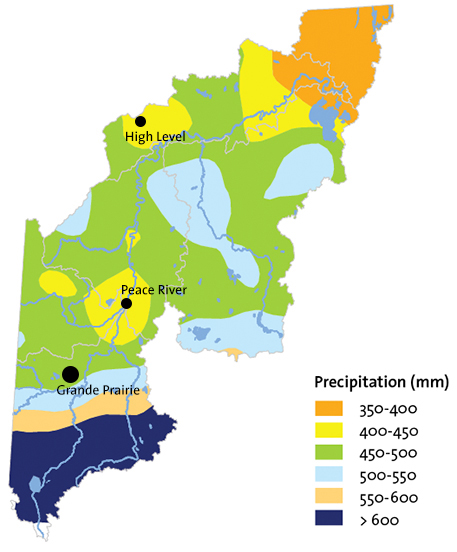ClimateFrom its most southerly tip in the mountains to its northernmost extent, the Mighty Peace watershed spans nearly seven degrees of latitude, so it is not surprising that the climate varies. Summers tend to be cool and short and the winters long and cold across most of the watershed, but slightly warmer and more humid conditions can be found along some stretches of the Peace River. The northern regions enjoy long summer days, with enough sunshine for those areas to comprise the most northerly agricultural region in Canada. Precipitation is greatest at the higher elevations in the south, with less falling in the northeast. Climate ChangeIt is generally accepted that global climate change will bring major changes to the hydrological cycle, with temperature changes the most pronounced in high latitudes. The entire watershed will likely see significant changes in water quantity and quality and seasonal flow patterns. These should be considered within the context of planning for future needs.WATER AND CLIMATE
Weather and climate are to a large extent determined by water. For example, the Mackenzie River and its tributaries, which run through parts of five Canadian provinces and territories, have often been described as a massive global air conditioning system. |  Source: Agricultural Land Resources Atlas of Alberta5
|
| © 2015 Mighty Peace Watershed Alliance | CONTACT THE ALLIANCE | NEXT PAGE: People |